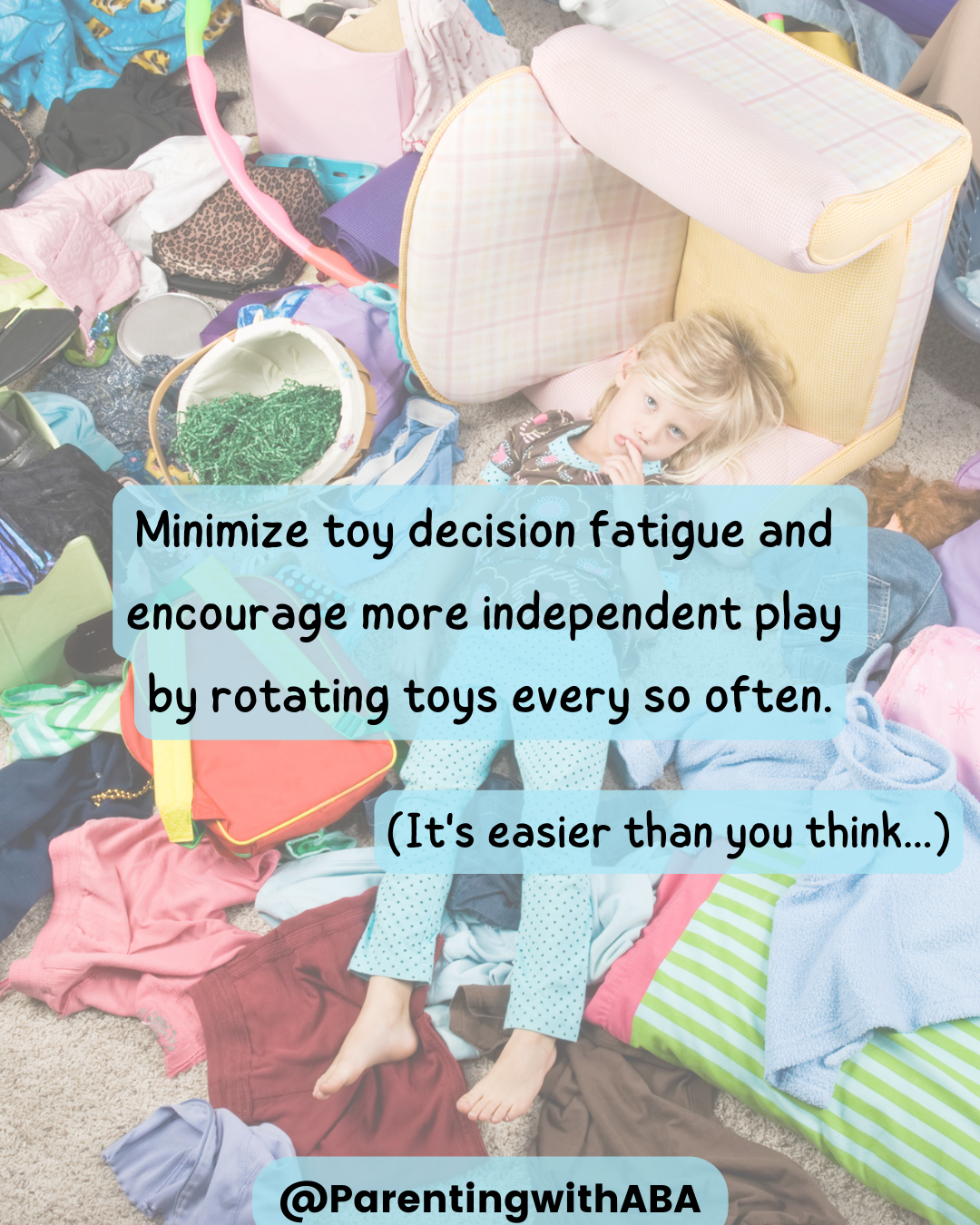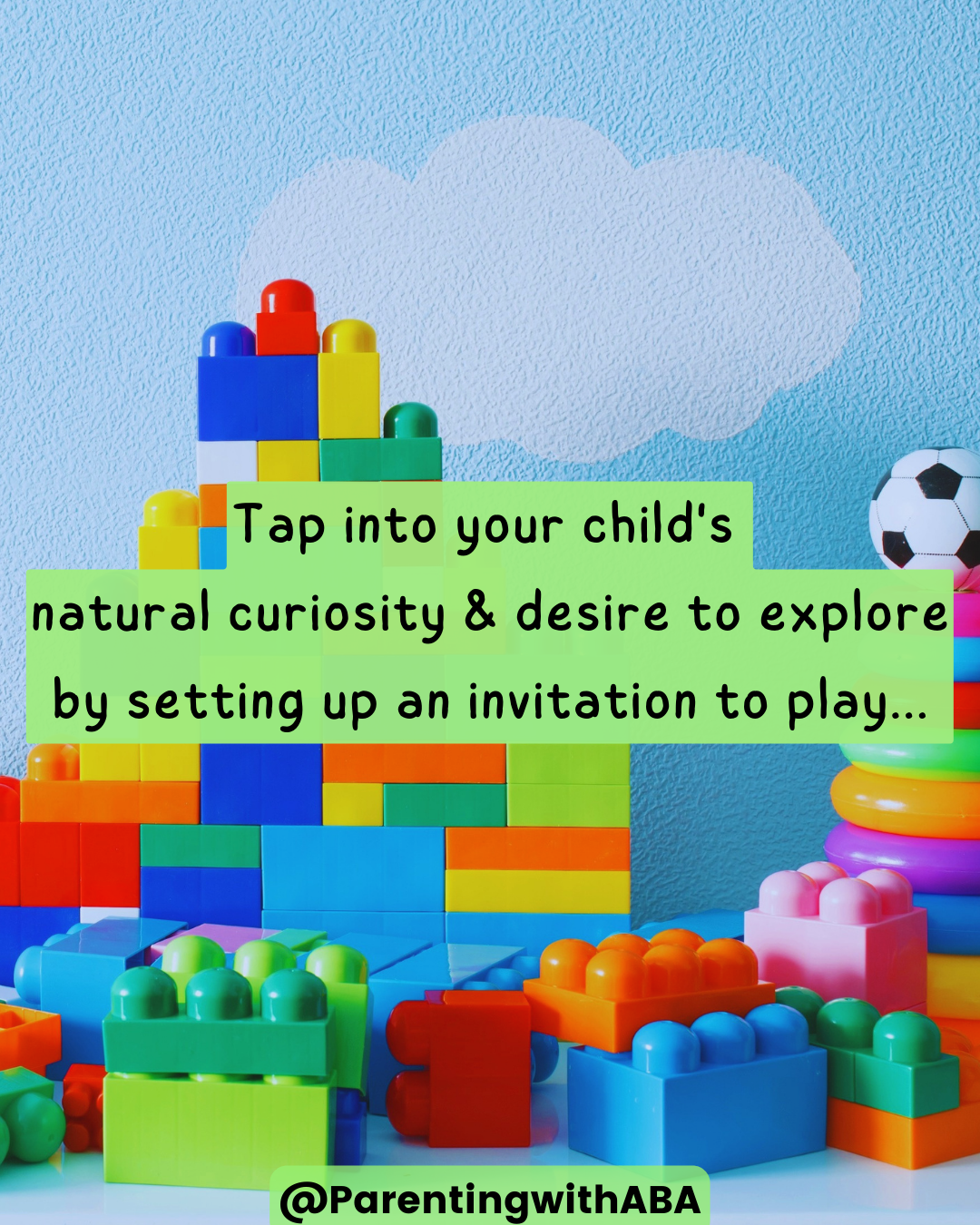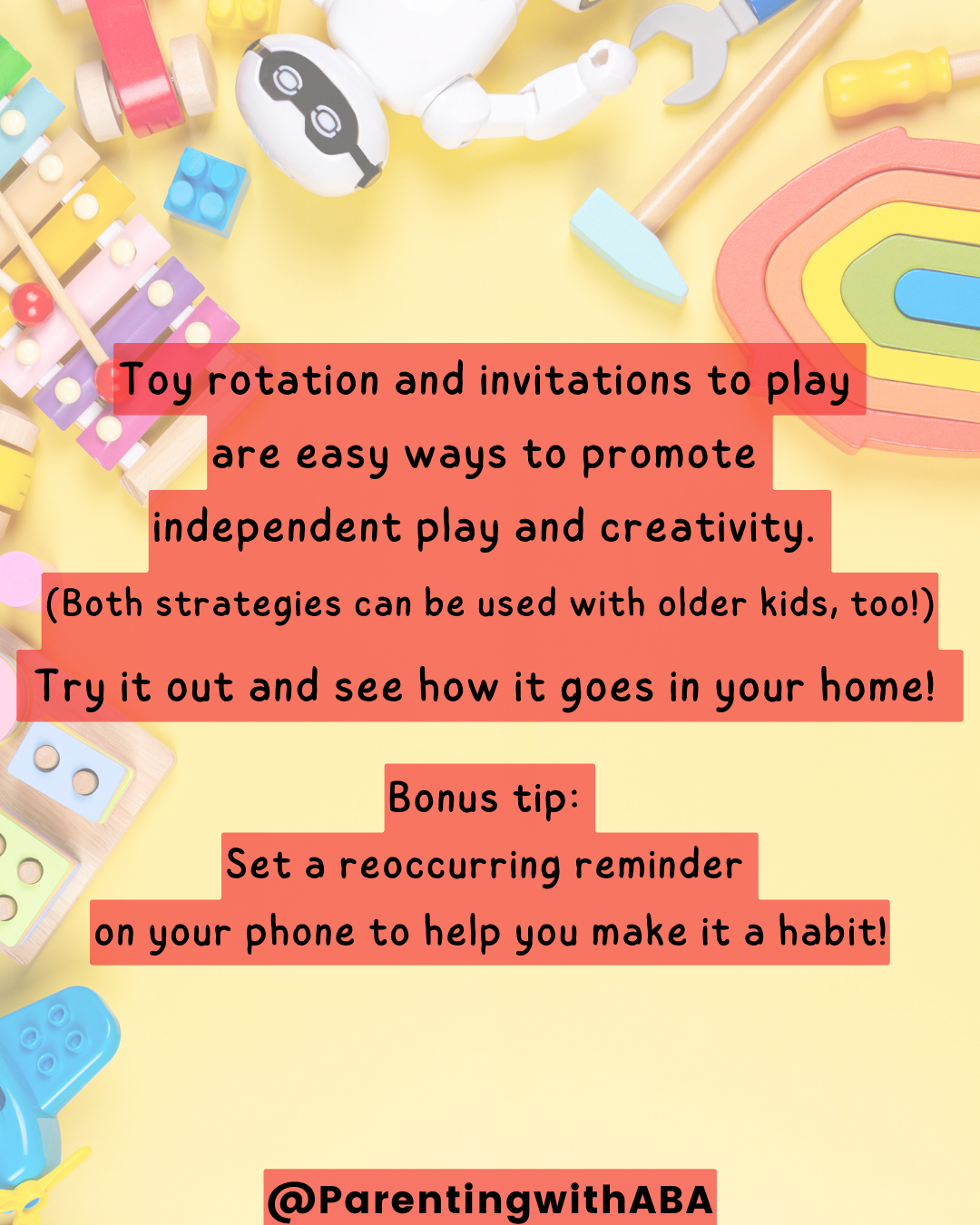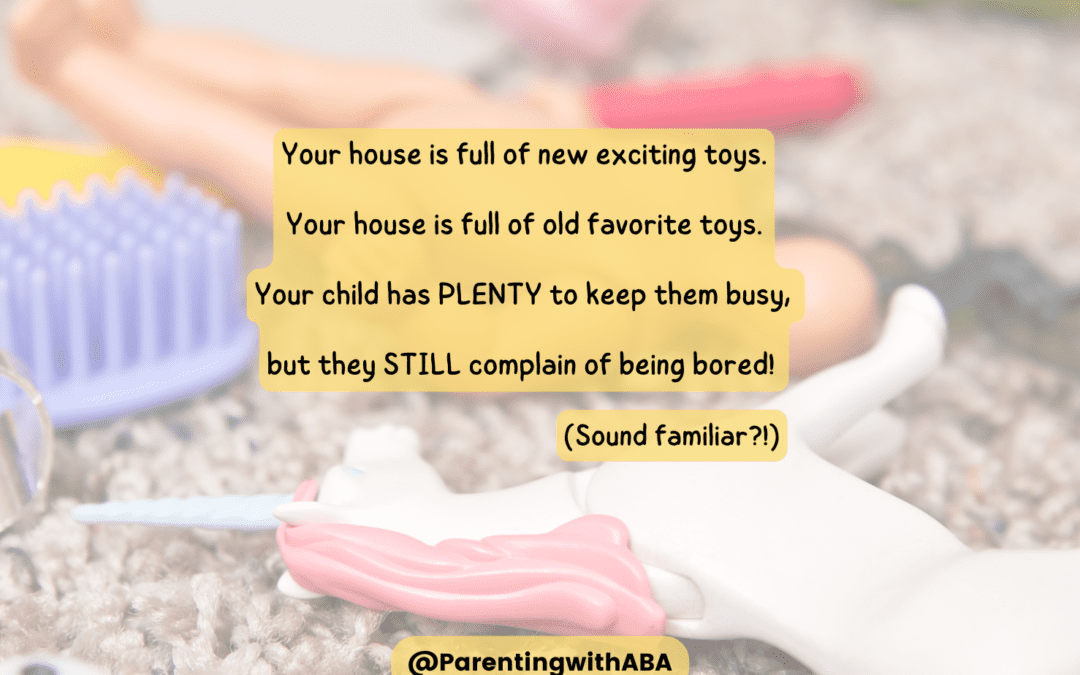Have you ever heard yourself saying things like this to your child(ren)?
“Just go play!”
“This house is FULL of toys- just pick one and do something!”
“I don’t know what you should play right now. Just go play!”
So many parents have told me that their child struggles to play on their own. You buy them all these toys (or they got new stuff as gifts), and yet they are still coming to you to direct them in all of their playing. Or they’re complaining about being bored. Gasp! How could we ever let a child be bored?! Spoiler- it’s good for them to be bored!
There are a few simple ways to set up some structure in your home to make this independent play time more well, independent. And don’t click away yet- it only takes a few minutes.

Structure One: Toy Rotation
If ALLLLLL the toys and gadgets and things are out and visible, it can actually lead to decision fatigue or overwhelm. Your child doesn’t know what to choose because there are too many choices. Sounds counterintuitive but have you ever been to a new restaurant and felt overwhelmed by the super long menu? I haven’t been to a Cheesecake Factory in years- do their menus still look like actual books with a million pages?
Too many choices can cause any of us to freeze in our tracks and feel overwhelmed. When this happens in your home with toys, what’s likely to happen? They’re going to come to you for help. When we are trying to teach and encourage independence, this is the opposite of the goal.
Instead, rotate toys. This means some things are put away- in a closet, in a dresser, in a bin. Out of sight, out of mind. Less choices are visible on shelves or wherever you have toys out. Every so often, swap out what is put away and what is out to be seen clearly. The things that just came back out feel new and exciting- even though you’ve had them for ages. Decision fatigue is minimized and your child is set up for success to be more independent.
How often should you rotate toys? There’s no magic number here. Just pick a length of time and try it. Approach this as an experiment. If your child is back to complaining about being bored within a week, you can rotate every week. If they’re playing happily still for 2 weeks, rotate after 2 weeks. The goal is to encourage exploration with what you already own. If that’s going well- appreciate and enjoy it! If it’s not working, make a change.
Structure Two: Invitation to Play
Take the toy rotation idea a bit further. Set up an activity for your child and just have it there as an open invitation. Don’t make a big deal out of it or require your child to do it. Just get something out and set it up for independent play.
This could look like getting out a building set and starting to build something and leave it incomplete for your child to finish or rebuild. You could put a sensory kit out on the kitchen table. Print out some new coloring pages and leave them on the table next time some crayons.
Where in your house can you set up an invitation to play? If you put an activity out in the middle of the floor (make sure you don’t forget and trip over it), your child will notice this different thing sitting there and hopefully curiosity will lead them to engage in it.

An ‘invitation to play’ is a concept derived from the Reggio Emilia approach to early childhood education. The Reggio philosophy encourages children to learn through exploration, by providing materials that ‘invite them to play’ in a creative, non-directive way, with no criteria for success.
You don’t need to go out and buy new things. Just set up an invitation to play by pulling together toys or craft items or things you already have and setting them out together for your child to notice and curiously engage with.

Toy rotation and invitations to play are both super simple but things we may easily forget about as busy moms. Even if your child is older, swap the word “toy” here for the things they do engage with- art supplies, electronics, books, puzzles, etc. Rotate their favorites, set up invitations to create instead of play, use these same tools but adapt them to your child’s age and preferences.
Take some of the work off your plate and take a break from being the ring master of your family circus. Try out toy rotations and setting up invitations to play to encourage your child to engage in independent play. Let me know how it works in your home!

Recent Comments